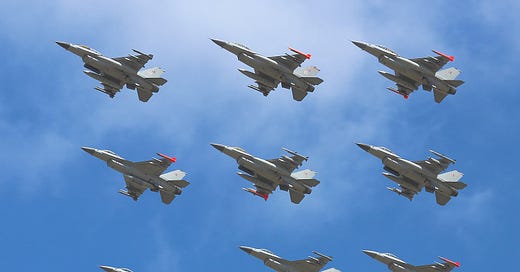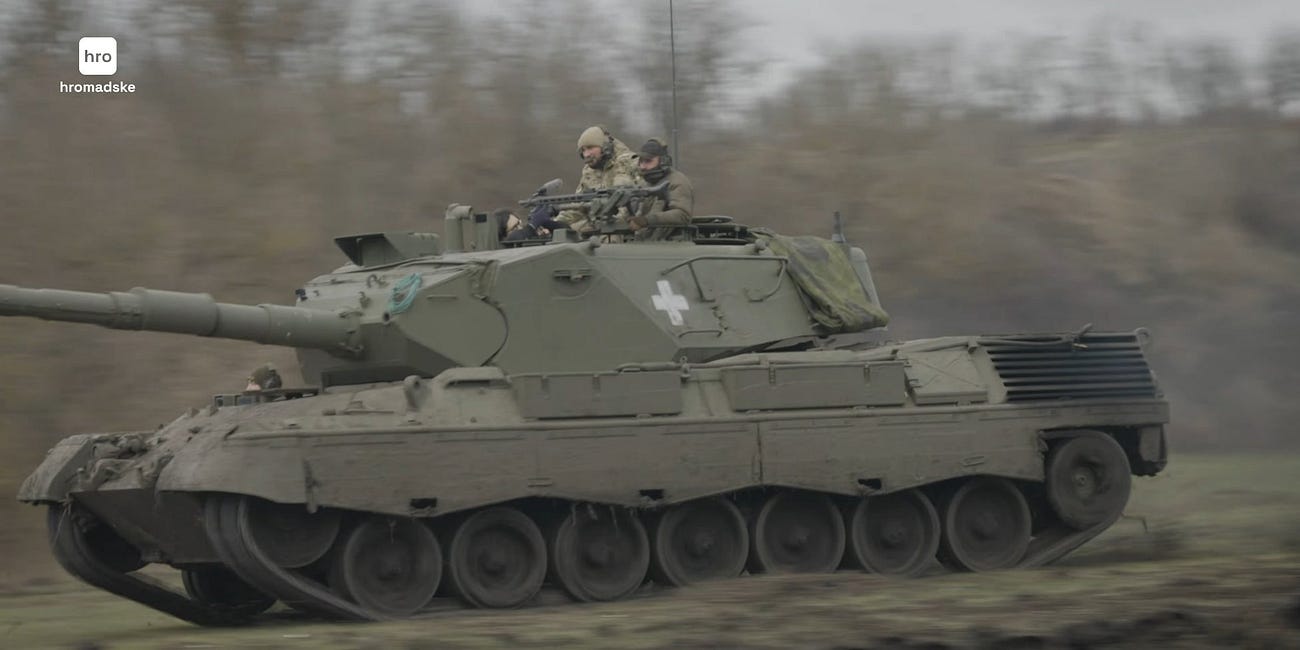The first of 50 or 60 surplus Lockheed Martin F-16 fighters Ukraine is getting from its European allies should begin arriving in Ukraine this summer. According to The New York Times, the first consignment—scheduled for July—will include at least six ex-Danish jets.
But 50 or 60 F-16s isn’t enough. Ukraine would need 500 or more F-16s to defeat the Russian air force, Ukrainian president Volodymyr Zelensky said in an interview this weekend. “In addition to [the fighters] we have, what our partners are ready to give us this year is, I believe, 10 percent of the volume we need.”
After Denmark, The Netherlands and Norway pledged many of their surplus F-16s last spring, Ukrainian pilots began learning English in the United Kingdom—and then training on the single-engine, supersonic F-16 at separate training bases in Denmark, the United States and Romania.
At the time of the initial pledge, those 50 or so F-16s may have been enough to meet Ukraine’s immediate needs. The Ukrainian air force went to war with around 125 combat aircraft—Soviet-vintage Mikoyan MiG-29s, Sukhoi Su-24s, Sukhoi Su-25s and Sukhoi Su-27s—and, in 26 months of hard fighting, has lost 82 of them, according to the analysts at the open-source intelligence collection Oryx.
But between donations of MiG-29s and Su-25s and a heroic effort by Ukrainian technicians to restore once-unflyable MiGs and Sukhois, the air force has as many active jets now as it did before Russia widened its war on Ukraine in February 2022.
And those jets, working in conjunction with the air force’s ground-based air-defenses had, by early 2023, fought the Russian air force to a stalemate over the 600-mile front line of the wider war. Lacking large stocks of long-range precision munitions and experience using them, the Russians had to fly over the front line in order to strike Ukrainian forces. But Ukrainian fighters and missile batteries made that all but impossible.
In that context, a consignment of 50 ex-European F-16s would have been additive: an air-power bonus that would have allowed Kyiv to replace some of its oldest and tiredest jets—or to expand the air force with several new fighter brigades.
But the context has changed. Last year, the Russian air force began arming its Sukhoi Su-34 fighter-bombers with crude, satellite-guided “KAB” glide-bombs ranging 25 miles—just far enough to keep an Su-34 outside the range of most of Ukraine’s air-defenses as well as its Su-27 interceptors.
The 1,100-, 2,200- and 3,300-pound KABs changed the air war over Ukraine. Abruptly, the Russians had the aerial advantage. The glide-bombs are a “miracle weapon” for the Russians, Ukrainian Deep State noted. And the Ukrainians have “practically no countermeasures.”
The Russians quickly seized on their new advantage. It took just 125 KABs a day for several days in mid-February finally to make the defense of Avdiivka, a former Ukrainian stronghold in eastern Ukraine, untenable for the Ukrainian army’s 110th Mechanized Brigade.
The brigade had other problems, of course—specifically, a desperate shortage of artillery ammunition that became inevitable once Russia-aligned Republicans in the U.S. House of Representatives cut off aid to Ukraine starting in October.
But the KABs nudged the 110th Brigade toward collapse. “All buildings and structures simply turn into a pit after the arrival of just one KAB,” wrote Egor Sugar, a trooper with the Ukrainian 3rd Assault Brigade, which covered the 110th Brigade’s retreat in mid-February.
For the Russians, glide-bombing now is doctrinal. The hundred or so surviving Su-34s are dropping as many as a hundred KABs every day, and concentrating the bombs on whichever town or village the Russian army aims to seize next.
Desperate to blunt the glide-bombing campaign after Avdiivka fell, the Ukrainian air force deployed one of its three Patriot air-defense batteries within just 20 miles of the eastern front. From there, the 90-mile-range Patriots could reach the Sukhois as they lined up for the glide-bombing runs.
This mobile Patriot unit may have been responsible for most of those 13 Sukhois the Ukrainian defense ministry claimed it shot down in the span of 13 days starting on Feb. 19.
The kill-streak came to a hard end on March 9, when a Russian drone spotted the Patriot team on the move near Pokrovsk. A Russian Iskander rocket streaked down, blowing up at least two of the Patriot launchers and killing some of their operators.
After that, the Sukhoi shoot-downs tailed off—likely because the Ukrainian air force redeployed its damaged mobile Patriot unit away from the front line.
The glide-bombings resumed, and got worse. There’s a new KAB model, now—one that ranges 40 miles. With KABs raining down by the hundred, 50 or 60 F-16s no longer is enough F-16s. Not when their pilots would need to cross the front line and fight in Russian-controlled air space in order to engage the glide-bombers with 30-mile-range AIM-120 missiles.
“If you fight in the sky, you have to fight to win,” Zelensky said. “That’s why 10 times our modern air fleet … is enough to defeat the number of Russian aircraft operating in Ukraine on its own.”
Even leaving aside the cost of supporting 500 modern jets and training enough pilots and maintainers to fly and fix them, there’s almost zero prospect of Ukraine getting hundreds more F-16s.
With 50 or 60 already pledged, there aren’t many more older F-16s left in the inventories of Ukraine’s European allies. Belgium might be able to free up a couple dozen old F-16s as new Lockheed Martin F-35 fighters arrive in that country later this year.
The only other obvious source of surplus F-16s is the United States, which has hundreds of the jets in service and hundreds more in storage. But Republicans still are blocking U.S. aid to Ukraine—and may never stop blocking it as long as they hold any combination of the presidency, the U.S. Senate and the U.S. House of Representatives.
Read more:
Where In the Hell Are Ukraine's Leopard 1A5 Tanks?
Starting way back in February 2023, Denmark, Germany and The Netherlands announced they jointly would donate to Ukraine at least 195 Leopard 1A5 tanks. The German-made, 1980s-vintage Leopard 1A5 isn’t a bad tank. It’s got precise day-night optics and a stabilized 105-millimeter main gun. Weighing just 40 tons, th…






